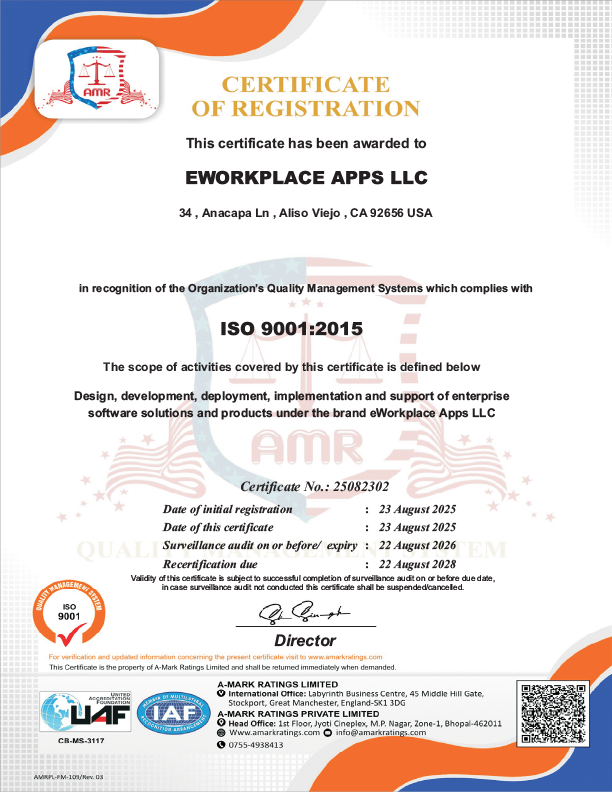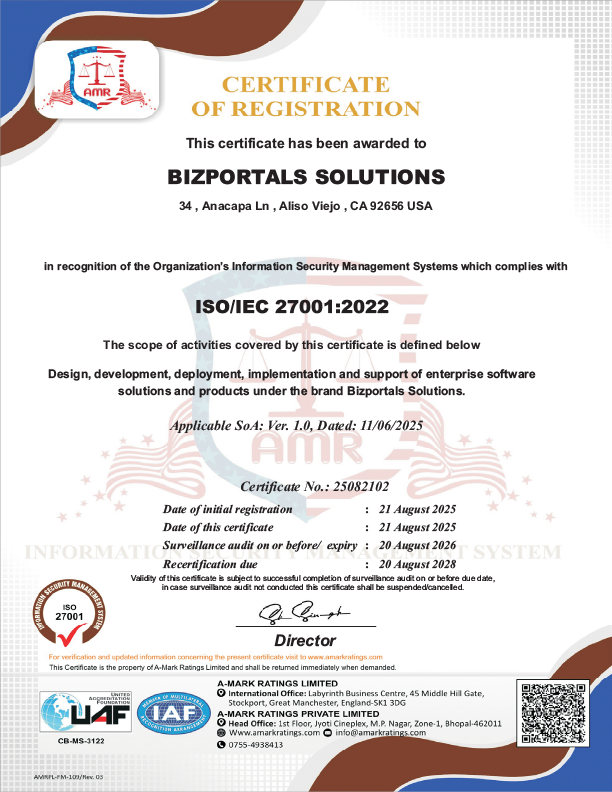Table of Contents
Step into a smarter digital workplace
Get a Free Product Tour Does your enterprise strive for assurance of having an intranet available whenever you need it? Do you seek your company to control IT investment and cost? If these questions brew up as a major concern, then all you are seeking is an intranet on a SaaS model. Back in times the idea of outsourcing when first emerged, companies found it difficult to trust a third party to manage their confidential data. Also, there were several enterprises that were slow to adopt outsourcing. And it was those few enterprises which gained benefits of increased availability of applications and freeing of staff resources. These critical business initiatives allowed the early adopters of Intranet’s SaaS model to recognize the positive return on investments which started being spread as a buzz across software market worldwide. Today the outsourcing of private servers and networks has turned out to become a common practice for large and small enterprises.
What’s so different about a SaaS- based Intranet?
From buzzword to a multi-billion-dollar market, software as a service (SaaS) has grown exponentially. Out of several predominant benefits, SaaS adoption has continued to serve, it can be evidently seen that the subsidy of it is to move the user interface from an old pattern of client server to a contemporary interface.
There are two critical aspects of this contemporary interface: new licensing model and software distribution model. The applications are licensed on a subscription basis where the cost is usually determined on the active number of users. The software or service is hosted on vendor’s hardware, but made available to the its clients over the internet in a browser.
Using the cloud technology interface has marked revolutionary attempts in the software business world, where the acceleration of SaaS adoption is reaching an all-time high. Today when business users expect modern interfaces, the next big thing in the software fraternity is SaaS.
Why SaaS is popular with the IT?
The end-user has taken the victory leap by replacing the traditional IT control of the user’s device; as the latest trends of iPhones, iPads, Android devices, and Macs have increased the number of users. The adoption of these new platforms is a clear cut pull away from the conventional client/server to a world dominated by Web Services provided by SaaS applications. Several leading types of research authenticate huge rise in the usage of SaaS model with the buzz in the market where many startups and Small to Midsized Businesses (SMB) are reassessing their purchasing options only to replace it with SaaS model, which is proving to be highly portable and effective.
1. High adoption & seamless integration
SaaS has eliminated the way companies would acquire and build business solutions by investing in purchasing heavy priced licenses to use a product. This required huge investments and heavy prices to install, learn and integrate the resource. This also demanded huge investments to upgrade major versions that came later with newer technologies. SaaS has proved to come up with unmatched services with improved efficiency, lower risk, and a substantial return on investment.
This practice continued until the innovative model of SaaS was introduced, as a software licensing distribution model. Here a service provider allows subscription and makes it available to customers over the internet. This allowed the exclusion of heavy costs & term commitments!
2. Grander business value to customer
One of the most compelling reasons for SaaS model is that it eliminates unpredictability of cost and service. With no ongoing maintenance cost along and fixed subscription cost, the corporate budget for an application service is always known. This offloading of services provides opportunities for management to fully drive their core business objectives.
Using modern techniques emerging from cloud and web technologies, SaaS vendors are often able to upgrade their services and software with no intervention from their customers. Moreover, the robustness of today’s cloud service is supported by numerous data centers filled with duplicate backup servers to ensure no loss of data and uninterrupted service. These gains in stability of operations and cost ultimately add up to tremendous business value.
3. Dynamic scope for innovative experimentation
SaaS allows dramatic financial risk reductions, because by allowing traditional software, companies pay huge amounts and still continue to face the risk of the particular software not fulfilling business requirements. So, by SaaS a company can purchase more than one accounts and eventually identify and decide whether the software complies with the specific business needs or not.
4. Pay as you go
Seeing the fueling growth of telecommunication services, social networking & business software applications has led to software developed services to be adopted by companies’ worldwide. Companies no longer need to make large up-front license commitment before there is a need for the software. Resulting in reduced IT and other operational costs. Moreover, reduces time and costs to go live, due to lesser implementation time has also provided value for time.
With the on-demand software usage or instant deployment, the company can avail intranet services, minutes after the provider activates the company’s account, unlike the traditional implementation systems.
5. Work Anywhere
SaaS -based intranet solutions can be accessed from anywhere the internet is available. The quick deployment which is its biggest strength is also backed up by the complexity of handling IT infrastructure that is managed by the vendor. This allows guaranteed levels of services with upgrades and updates completely managed by SaaS provider implying.
Thus SaaS is counted as reliable and thriving software distribution model among small and midsized businesses. This allows businesses to easily expand in foreign markets as well, as the product is an internet based solution. With SaaS solutions, the risk of sudden revenue loss is minimized as it associates well with business strategies and thereby allows stability & predictability.
There have been several types of research that have gauged phenomenal reports on growing rate of SaaS market. The stark observations have been confirmed by authentic reports suggesting that by the year 2018, around 27.8% of the worldwide enterprise applications market will be SaaS-based, producing around $50.8B in revenue up from $22.6B or 16.6% of the market in 2013. While the Gartner reports Worldwide Public Cloud Services Market is forecast to approach $204 Billion in 2016. According to the prescribed report, SaaS is expected to rise 20.3 percent in 2016, to $37.7 billion. This indicates significant growth in this domain. Furthermore, as major software vendors have started offering public cloud options since last year, this indicates further acceleration in the growth of SaaS market.
As the traditional hitch of sailing through technological difficulties are merely surpassed and replaced by SaaS, it has served obvious and compelling benefits to its customers. We have been introduced with the ever sophisticated functionality without up-front expenses and other hassles associated with installations and maintenance.
While the SaaS model for intranets has served enterprises with a dynamic and unique possibility of running a business, it also fulfills prerequisites for the management seeking to get hands on to the latest capabilities allowing businesses to dive in and explore the benefits of it.
Table of Contents
Step into a smarter digital workplace
Get a Free Product Tour


